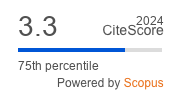Article | Open Access
Catching the Digital Train on Time: Older Adults, Continuity, and Digital Inclusion
| Views: | 3147 | | | Downloads: | 3351 |
Abstract: As society has become more reliant on digital technology, it has changed the perception of the ageing experience to now include a digital component. However, not every older adult perceives digital technology as essential to their way of ageing. In this article, we asked 76 older adults with different patterns of digital technology use how they experience and perceive the role of digital technology in the context of their ageing. The thematic analysis results point to a more nuanced understanding of the importance of familial support, the role of personal history or continuity in older adults’ digital inclusion, and how they see the role of age in relation to digital technology. Furthermore, our findings show that ageism is both a barrier and a motivational factor for older adults. When ageism is based on the level of digital inclusion, it can cause a different ageing experience, one that is perceived as superior by those using digital technology. This leads to a precarious situation: It becomes essential to maintain digital skills to avoid the non‐digital ageing experience even as it becomes more difficult to maintain their skills due to the evolution of technology. Prior to the study, we created a conceptual framework to understand ageing in a more digitalised world. We used the findings of this study to test the conceptual framework and we conclude that the framework can clarify the role (or lack) of digital technology in the ageing experience of older adults.
Keywords: ageism; continuity theory; digital inclusion; digital technology; older adults; social support; thematic analysis
Published:
© Cora van Leeuwen, An Jacobs, Ilse Mariën. This is an open access article distributed under the terms of the Creative Commons Attribution 4.0 license (http://creativecommons.org/licenses/by/4.0), which permits any use, distribution, and reproduction of the work without further permission provided the original author(s) and source are credited.


